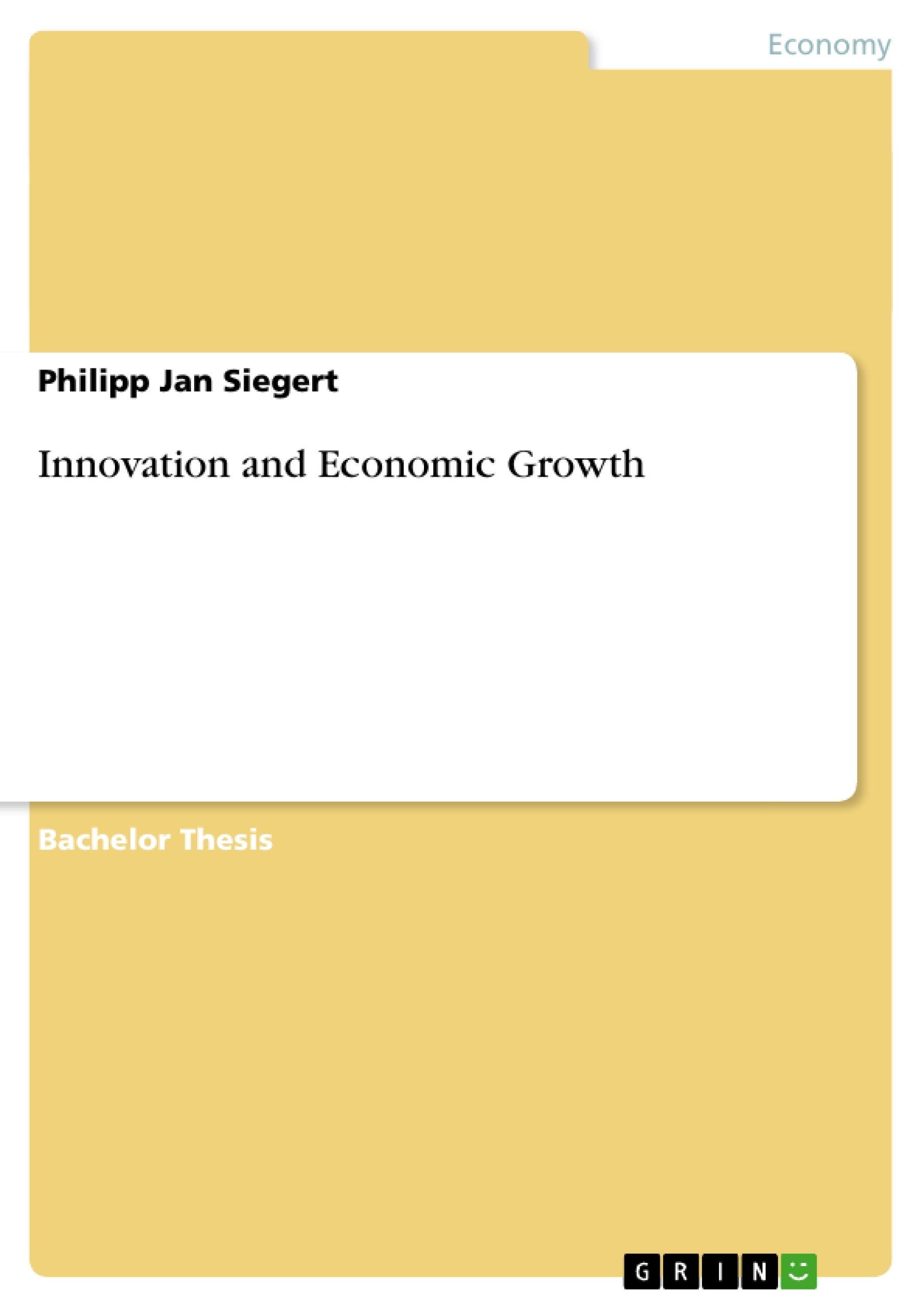Research questions
The fact that some countries show higher growth rates than others has long been observed in the global economy. Even within the OECD area, where countries are regarded as being relatively homogeneous, growth levels differ remarkably. This leads inevitably to the question how different growth rates can be reconciled and what factors are responsible for different growth rates. The purpose of this thesis is to examine one of the factors, besides the classical input factors labour and capital, that is often regarded to play a significant role in economic growth namely innovation.
After a theoretical introduction in the first section of this thesis, the second section reviews principal earlier studies about the effect of innovation on economic growth to provide a methodological overview. In section three, research and development (R&D) expenditures (taken as a proxy for innovation) among 15 OECD countries are evaluated in the period 1973 – 1998 to analyse how the technology stock of these countries developed relative to their GDP growth and to answer the question which countries performed relative well with respect to innovation and which countries lag behind. Section four analyses the impact of innovation on economic growth by econometrically testing a neoclassical growth model where innovation is endogenized. The purpose of this econometric analysis is to show how much economic growth can be accounted to innovation when compared to the classical input factors capital and labour. Section five focuses on recent policy actions undertaken in the European Community to support innovation. The section analyses possible policy responses to the innovation phenomenon with respect to the European Community. Section six contains brief concluding remarks.
Table of Contents
- Introduction.
- Research questions..
- The Term 'Innovation'.
- Theoretical Background...
- Principal Earlier Studies
- Introductory Discussion........
- Four Empirical Studies.
- Comparison of Technology Stocks among 15 OECD Countries ..............
- Introduction..
- Interpretation
- A European Technology Stock Map.
- Introduction.........
- The Model
- Econometric Challenges.
- Interpretation
- Innovation Policies in Europe
- Introduction.\n
- Weaknesses of Europe's Innovation Activities...\n
- Diversity and Convergence.\n
- Policy Actions Undertaken in Europe..\n
- Conclusions
Objectives and Key Themes
This thesis explores the role of innovation in economic growth, particularly within the context of OECD countries. It aims to understand how innovation contributes to economic growth and how this contribution varies across different countries. The thesis delves into the concept of innovation, reviews previous studies on its relationship with growth, analyzes the evolution of technology stocks in various OECD nations, and examines the impact of innovation on economic growth through an econometric model. Finally, it investigates policy actions undertaken in the European Community to promote innovation.
- The impact of innovation on economic growth.
- Comparative analysis of technology stock development in OECD countries.
- Econometric modelling of the relationship between innovation and economic growth.
- Policy measures implemented by the European Community to encourage innovation.
- The role of innovation in explaining variations in economic growth rates across countries.
Chapter Summaries
The first chapter introduces the topic of innovation and economic growth, highlighting the need to understand the factors driving different growth rates within the OECD. It also defines the term "innovation" and outlines the thesis's structure and research questions.
Chapter two provides a theoretical background, introducing Solow's model and discussing its significance in understanding the role of technological change in economic growth. It also reviews previous studies that explored the relationship between innovation and growth.
Chapter three analyzes the evolution of technology stocks in 15 OECD countries between 1973 and 1998, comparing this development to their respective GDP growth rates. This analysis aims to identify countries that perform well in terms of innovation and those that lag behind.
Chapter four focuses on the econometric analysis of the impact of innovation on economic growth. It tests a neoclassical growth model that incorporates innovation as an endogenous factor. The objective is to quantify the contribution of innovation to economic growth compared to traditional input factors like capital and labor.
Chapter five delves into innovation policies implemented in the European Community. It examines the challenges and weaknesses in Europe's innovation activities, explores the diversity and convergence of policies, and analyzes the policy actions undertaken to support innovation.
Keywords
The primary keywords and concepts in this thesis include: innovation, economic growth, OECD countries, technology stock, research and development (R&D), econometric analysis, neoclassical growth model, policy actions, European Community, and comparative analysis.
- Quote paper
- Philipp Jan Siegert (Author), 2004, Innovation and Economic Growth, Munich, GRIN Verlag, https://www.grin.com/document/28580




